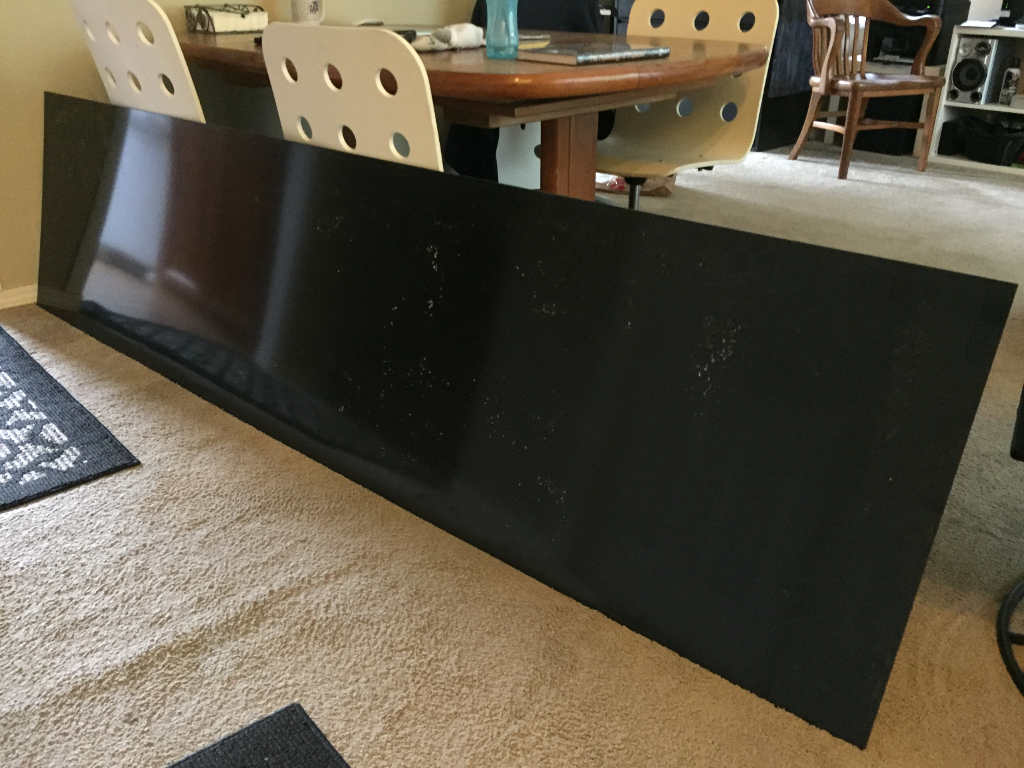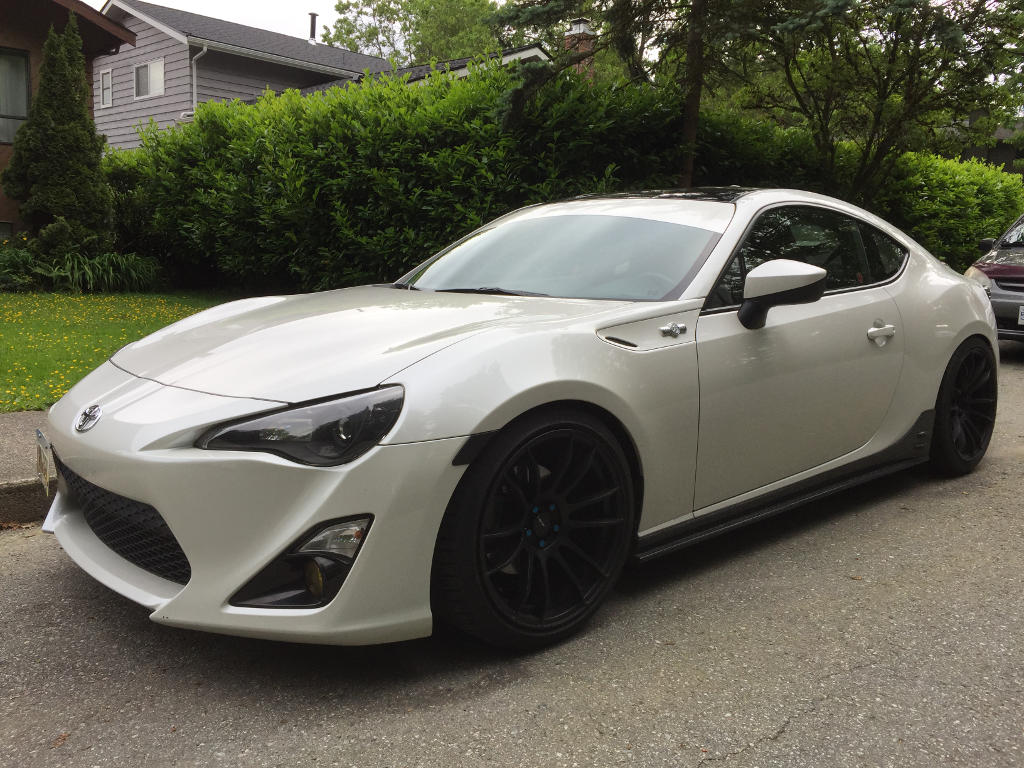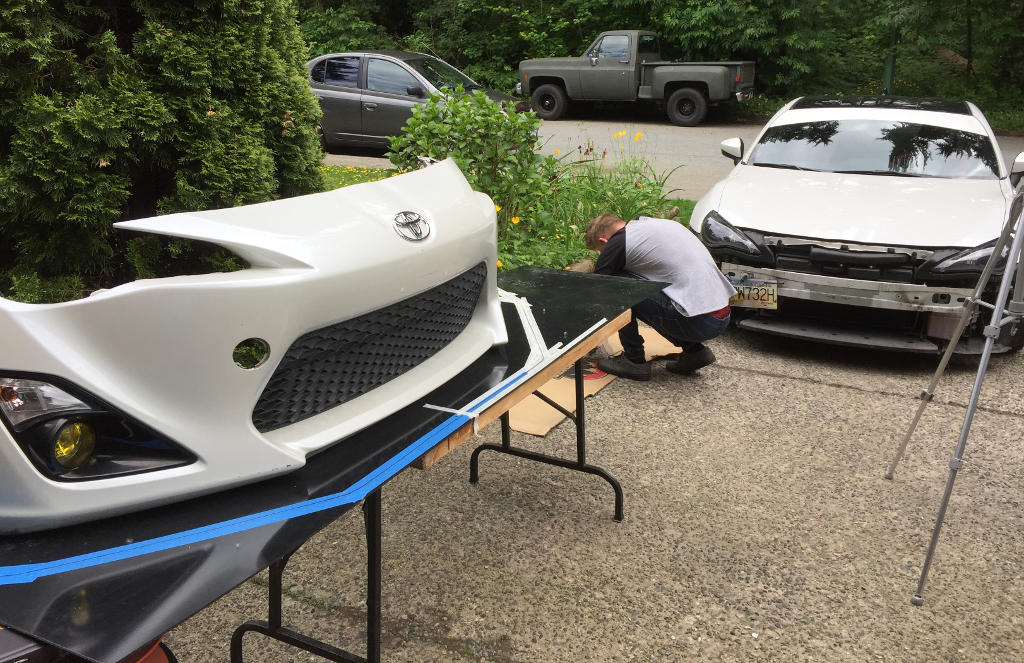Archives For authentic
This is what riding looks like when it works out…
The following posts should confirm that the authentic learning opportunities, inquiry based learning and taking ownership idea that I talked about in the video are ideas that I have been exploring for a long time:
Why Authentic Learning Converts Into Lifelong Learning (2017)
In pursuit of the better way – the learners mindset (2016)
The Gift of Intrinsic Motivation (2013)
Why Student Engagement Plummets in High School (2013)
Difference Between “Doing Projects” and “Project Based Learning” (2013)
You Learn What You Live (2011)
Creating Significance to Foster Learning (2009)

It is very important that you understand the full context of my son’s circumstances to understand the following authentic learning experience that I am about to share. The average home price on the North Shore of Vancouver is around 1.5 million dollars and this is for a very average 1200 square foot house. To put this in context, the 4 bedroom, 3 bath, 3000 square foot house with 10, 12 and 14 foot ceilings, polished concrete floors and an attached 3 car garage on 2 acres of land that we sold for $250,000 when we left Abilene Texas in 2011 would be worth between 4-4.5 million dollars in West Vancouver which is the most prestigious area of the North Shore. As you can imagine rents in this area also extremely high.
When we moved to the North Shore back in 2013 so that my boys could pursue their dreams of becoming professional Down Hill Mountain bike racers we knew we wouldn’t be able to afford to buy a home. While the cost of housing is ridiculous there are other benefits that make living on the North Shore a priority for my boys. In addition to living between 5-15 minutes away from 3 different mountains my boys use for daily training, we are also an hour away from Whistler which has one of the best Down Hill Mountain Bike Parks in the world. Factor in the amazing bike culture that has grown out of the North Shore and Whistler and one could argue that there are few better places in the world where my boys could pursue their dreams.
Unfortunately, Down Hill Mountain Bike racing is a relatively new sport (about 20 years old) and most pro racers do not make much money when compared to other professional athletes. In 2016 Aaron Gwin who is the top racer in the world changed the sport by moving to a new company that was willing to pay him 3 times what his previous company paid him. This massive increase put his annual contract at just under half a million dollars a year. There are only a handful of riders in the world who are making low six-figure salaries so unfortunately, most up and coming pro racers like my boys are lucky to have sponsorships which will help cover the cost of equipment but the cost of travel, racing, training, and living is something that is up to the rider. This explains why my two boys who are 19 and 21 still live at home. Both my boys are extremely independent and even though they live with their parents they have complete freedom and control over all other aspects of their lives. We live in one the most expensive places in North America and they don’t make much money—yet. If we were living anywhere else they would be on their own.
A few months back, neighborhood friends asked if either our boys would be willing to house sit for them and take care of their two full-size dogs when they went to Hawaii for a month. Levi, my older son who was still 20 at the time, jumped at the opportunity to house sit and have his own space for a full month. I managed to control myself and didn’t comment at all on his decision even though I was thinking to myself, I hope Levi realizes just how much work and time walking, exercising and caring for those dogs and that large house is going to take. These people live in a large house at the base of Mount Fromm near the end of a trail that Levi often trains on so I can only image that the proximity to his training was another factor that swayed his decision.
One more bit of context… My boys grew up having choice, ownership, and voice through authentic learning opportunities (COVA) so I saw this opportunity for Levi to have another wonderful way to learn some valuable life lessons — especially when it comes to taking care of other people’s stuff and their animals. My boys didn’t have pets growing up partially because we traveled a fair amount and our lifestyle didn’t really allow for being tied down by animals. When my boys were much younger we often took care of friends cats, dog, gerbils and birds so while my boys didn’t live with animals for years at a time there were times when they were responsible for animals for months at a time so Levi should have known partially what he was getting into. Back to the house and sitting scenario.
About a week into Levi’s house and dog sitting experience when he stopped by to work on his bike, I simply asked him how it was going and he lamented:
…This is taking way more time than I expected…those dogs just won’t leave me alone… I like them but they take so much work… I walk them in the morning before I train… then I come over here to work on my bike… and then I have to go into work and then after work I have to walk them again…
Once again, I managed to control myself and didn’t comment on anything but I did ask if there was anything I could do to help. Levi simply said,
No Dad…I got this.
I knew before Levi had taken on this responsibility that the small freedom that this great house would offer would come at a significant expense of time which Levi just didn’t have. Our garage is equipped as a bike repair shop so I knew Levi would still come home on a daily basis after his training rides to clean and maintain his bike. As a professional athlete, Levi controls his diet very closely and is a creature of habit so I also knew he would be coming home daily to prepare his meals and eat. I knew he would want to use and have access to the Vitamix, the pantry, the freezer and all the food prep resources he was accustomed to. I also knew that his responsibility as the head mechanic and mountain bike instructor at his sponsor Endless Biking would be increasing that same month because Endless was starting to receive their shipments of new bikes for the upcoming season.
So as the days progressed Levi kept coming over earlier and earlier in the morning to make his special shake and then head to the gym which is only a block away. Levi would pop in and out throughout the day between training, working, exercising the dogs and then we wouldn’t see him until the next morning. Our friends came back and on the first night Levi was back at home I told Levi I was proud of how well he handled the responsibility and commended him for going above and beyond what was expected in exercising the dogs. When he said—I am glad this is over… I am never going to do that again… I couldn’t contain myself any longer and started the following short exchange. I had learned over the years that the best way to start a learning moment conversation was to provide a brief context and then ask a question. So I simply stated… Levi, when I was young I too house sat and took care of other people’s dogs like you have so I knew before you took on this responsibility just how much work this was going to be. I am sorry for not telling you about this before. Can you tell me how I might have talked to you or warned you about what you were really taking on. Without hesitation Levi stated— Dad, I wouldn’t have listened… I had to learn this myself. Levi then gave me a big strong hug. I am glad I cared enough to let Levi learn everything he learned completely on his own. Fortunately, this type of life lesson can and does happen in a more formal learning setting.
Over the years, for the most part, I have created significant learning environments (CSLE) where I have given my boys and my students choice, ownership and voice through authentic opportunities (COVA). The reason I said “for the most part” is that giving over control is one of the hardest things a parent or teacher can do. We don’t want our kids to get hurt, or to struggle, or fail or get annoyed with us so we have the tendency to shield them in advance from the consequences of their actions and yet this is where the most significant learning can happen. Giving my boys and my students control over their own learning has been one of the biggest challenges of my personal and professional life.
The life lessons learned through taking full ownership of a learning opportunity cannot be matched by any form of direct instruction or teacher controlled experience. If we care enough for our learners we need to let go of the control and be willing to see them struggle, or fail or even get annoyed with us if we expect them to learn the life lessons that come about through taking full ownership of authentic learning opportunities. Both my boys have learned the value of authentic learning and while they do occasionally get annoyed with me it doesn’t happen much anymore because they have grown to appreciate the value in the struggles of taking ownership of their own learning.
Unfortunately, since many of my students are accustomed to a more traditional form of education which includes giving the teacher or professor what they want and regurgitating information in a simulated project, paper or exam, it is not uncommon to have some of my students annoyed or even angry with me because they feel that I may not be doing my job by not telling them what to do and think. I am willing to have them be annoyed with me because I care enough about their learning to know that if they take ownership and learn by working on something that is authentic then their learning will be transformative. I don’t just let my boys or my learners flounder without any guidance, I do give them guidance and direction through the learning environment that I create or that I point them to through authentic opportunities. The following quote from a recent graduate of the Digital Learning and Leading program where I use the COVA+CSLE approach sums up her experience and the value of this type of learning:
The DLL program shows you where to look, but does not tell you what to see – Brandi Collins
When we let our learners take control of their learning the experiences they can embrace, the meaningful connections they create, and the knowledge that they gain will be life changing. Isn’t this really our primary responsibility as parents and educators?
References
Collins, B. (2017). Highlights from Lamar University Masters program in Educational Technology [Blog]. Retrieved from http://madelinebrandicollins.weebly.com/digital-learning–leading.html
Ventura, M. (1993). Letters at 3am: Reports on endarkenment. Spring Pubns.
This past Saturday morning when I walked into our living room I couldn’t help noticing the large sheet of black ABS plastic that Caleb, my 19-year-old son, had acquired for his latest project.
Ever since Caleb was a toddler he has enjoyed creating things that would change and enhance his world. For the most part, he was just like every other young kid who loved playing with Lego and other toys but Caleb and his older brother Levi would migrate away from typical play and look for ways to improve their toys and their environment. Both my boys would use Lego and Kinex and other constructables (what I like to call toys that you can build things with) to make things that they could use for other purposes. Their desires quickly moved beyond using Lego and Kinex to using authentic resources to change their environment. For example, when my older son Levi was three he wanted to be able to pull his wagon with his bike and rather than just use a rope he wanted my help to rig up a hitch system which we created and he used and then passed onto his younger brother. Caleb was equally industrious and I have so many fond memories of heading down to the hardware store to gather the items my boys needed for their latest projects.
So when I saw the big piece of plastic I reminisced about Caleb’s passion for making things. I also thought about how my wife and I carefully nurtured and helped him and his brother develop their interests and created the environment in which they could fully develop their creative abilities and learn how to learn. If there was just one thing that I can point to that really made the difference it would have to be the use of authentic projects. While we didn’t deny our boys models, Lego, Knex and other constructables we also encouraged them to explore working on authentic projects. My boys were always working on something that was real and that would make an authentic difference in their world.
The bike hitch, bike ramps, countless other smaller projects, and the major fort project were just the starting point for exposing my boys to authentic learning. When I purchased and renovated a rental property the boys who were just 8 and 10 worked alongside me at every stage from cleaning up the junk in the yard to demolishing the basement rooms, to building new rooms and doing all the work that was necessary to bring the house into a state where it could be rented and then sold. Later that spring when the boys were still just 8 and 10 they planned out all the details of our month-long summer bike trip which included everything from getting the maps from the AMA, planning the route, to identifying what we could do along the trip to, where we would stay, and what we could do when we got to the interior of British Columbia. They put together a detailed binder that had all the information we would need. That first major biking holiday is still one of the most talked about trips that my boys will reminisce about. As professional DownHill Mountain bike racers and extreme athletes Levi and Caleb travel continuously so this early experience has served them well. The have spent the majority of their short lives working on authentic projects that not only enhance their lives but lives around them.
Authentic projects work because they not only give the learner choice and ownership over the world that they live in but they also give the learner the ability to find and use their voice and show the world what they have created. Caleb’s projects are getting very sophisticated and while the air splitter he created for his high-end sports car is not a project you would ask a novice to undertake Caleb is able to create a professional quality enhancement and add significant value to his car because he has lived a life filled with authentic projects.
The cognitive and analytic processes of prediction, modeling, experimentation, diagnosis, and problem-solving that Caleb experiences through his countless authentic projects has also contributed to his desire to take on in bigger and bigger challenges. I enjoy helping Caleb with his projects because his passion for learning and creation are contagious.
In our typical education rhetoric we talk about engagement, individualized instruction, and life-long learning but the reality of standardized testing or, if our learners are lucky, the occasional analysis of case-based studies offers our learners very little motivation for learning in the present, so how can we expect them to be excited about learning in the future. We can change this. But that means we have to give back control of the learning to the learner. We need to allow our learners to choose and work on authentic projects that will inspire their intrinsic passions for learning and help them grow their learner’s mindset. When we do this for our learners the possibilities of what they will be able to do are virtually limitless.
Additional thoughts on Authentic Learning:
- In Pursuit of the Better Way: The Learners Mindset
- Why Good Ideas Too Often Go Bad
- Mapping Your Learner’s Journey
- Ed Tech Projects Fail When the Focus is Technology rather than Learning
- Difference Between “Doing Projects” and “Project-Based Learning”
- Learning by playing, tinkering and making (The Learner’s Way blog of Nigel Coutts)


































